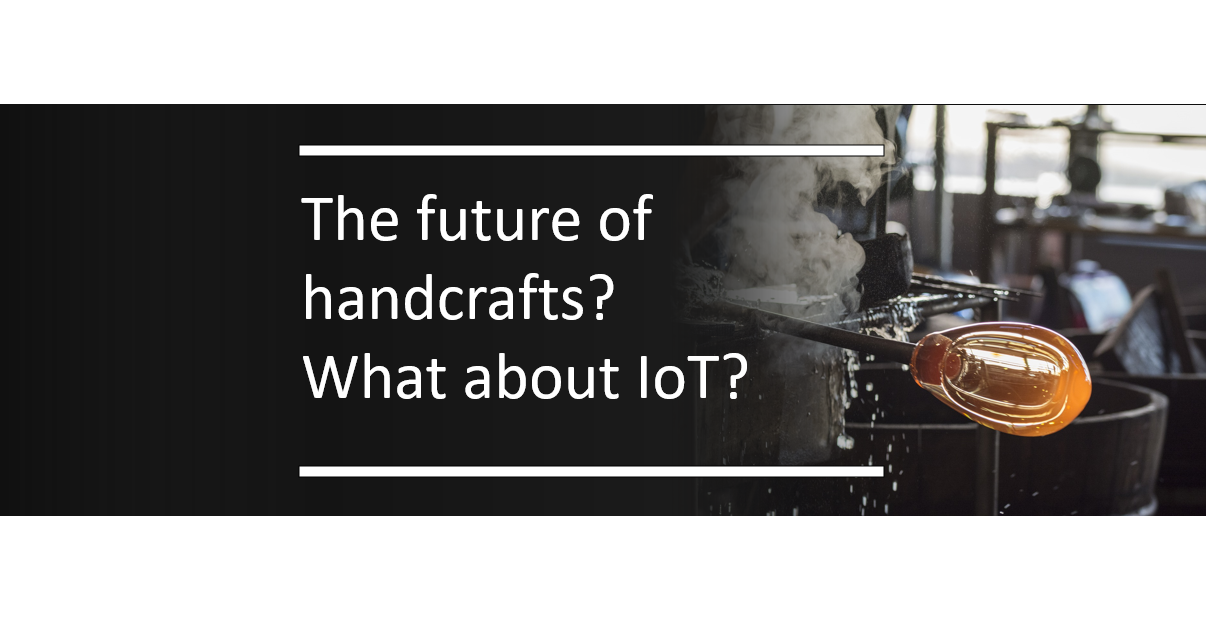The future of endangered handcrafts? What about IoT?

Lately I’ve been writing mostly about the challenges of IoT,
Time to write something inspiring while avoiding the usual use cases.
Topic of today knowledge digitalization
I always have been a fan of “how it is made” on discovery channel, even in the youtube era. From machines over food production, to handcrafts to whatever. having HL insights in the processes behind the products always helped me, even when on unknown terrain.
And in this case, it inspired me to write an IoT article.
Highly skilled handcrafts are an endangered species
I’ll talk about glass blowing, just to pick one, you know, The kind with a guy blowing into a tube with on the other side a lump of molten glass.
It’s fascinating to look at but I couldn’t stop thinking about how fragile the profession and company might be.
If you only have one or two of those guys that are skilled and one gets sick, the other is on holiday, then, I guess, you can close shop.
Another worry I had while watching, was that it must have taken years to perfect these skills. Good luck finding an interim for this line of work.
It might also not be the most appealing job offer out there, no matter how fascinating it is to look at.
Surely some of the reason why a lot of these type of professions disappear over the years.
But how to solve this?
How to save the skill for next generations?
What if you could transfer the knowledge of a glass blower into the micro circuits of a robot?
Robots are getting more common, flexible and cheaper by the day, so that technology could be an answer to the mechanics,
Remains a simple transfer of brain into the machine.
Sounds farfetched but then again … I’ll get to “how” a bit later..
First question is: what could this brain transfer do for your company?
- A robot can ensure continuity
- If broken it can be replaced
- It can work long hours in harsh environments
- Doesn’t get tired
Classics right, what about this ones?
- Based on the techniques learned it could drive innovation with new products, custom designs
- Before producing a new vase, a virtual environment checks the Success/ failure Rate of the design.
- You can produce on demand, custom, tailored, so execute a design made by someone else.
Your company suddenly also gets a new and different Intellectual Property that is transferable.
Still haven’t come to the point that IoT comes with a helping hand… but here it is.
It’s all about sensors, measuring and machine learning, analytics+ a bit of data transfer
- Rotation sensors
- Acceleration sensors
- Strain gauges
- Shock and tilt
- Visual imagery
- Remote temperature scanning
- Air pressure in the pipe
Sensors have become so sensitive that they can capture every single motion, every single parameter of the process to a detail that even the most skilled person doesn’t master.
Collecting and storing this data will give you an actual “Skill blueprint” of the professional and of your business.
This is knowledge digitalization and with the proper tools and robots, even handcrafts, could be saved and reproduced, scaled up.
I know it is not the typically “called IoT” but I tend to make less and less difference.
When there is data that is centralized and processed, it’s part of the family.
Kris Van der Hoeven


Recente reacties